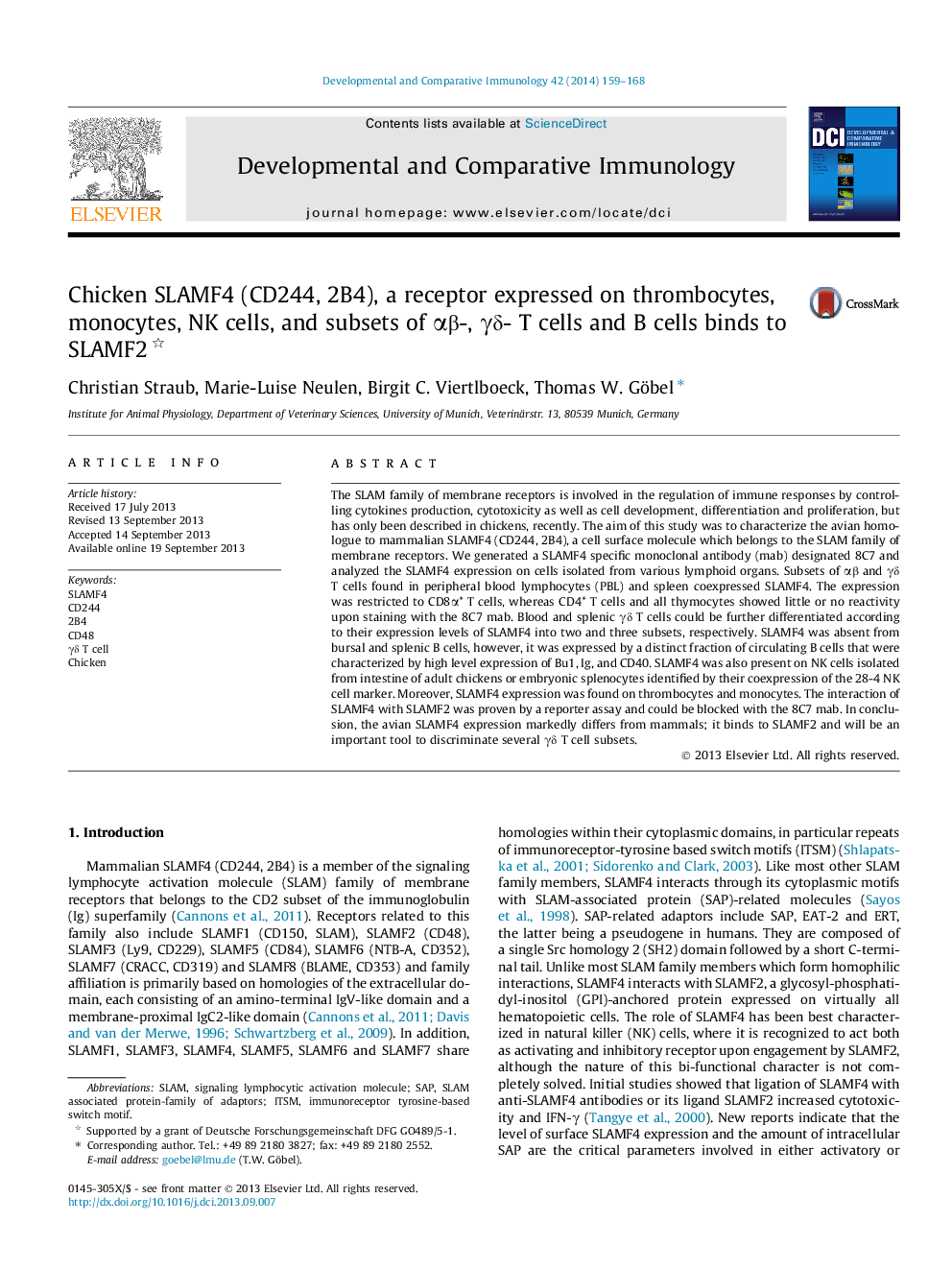| Article ID | Journal | Published Year | Pages | File Type |
|---|---|---|---|---|
| 10971458 | Developmental & Comparative Immunology | 2014 | 10 Pages |
Abstract
The SLAM family of membrane receptors is involved in the regulation of immune responses by controlling cytokines production, cytotoxicity as well as cell development, differentiation and proliferation, but has only been described in chickens, recently. The aim of this study was to characterize the avian homologue to mammalian SLAMF4 (CD244, 2B4), a cell surface molecule which belongs to the SLAM family of membrane receptors. We generated a SLAMF4 specific monoclonal antibody (mab) designated 8C7 and analyzed the SLAMF4 expression on cells isolated from various lymphoid organs. Subsets of αβ and γδ T cells found in peripheral blood lymphocytes (PBL) and spleen coexpressed SLAMF4. The expression was restricted to CD8α+ T cells, whereas CD4+ T cells and all thymocytes showed little or no reactivity upon staining with the 8C7 mab. Blood and splenic γδ T cells could be further differentiated according to their expression levels of SLAMF4 into two and three subsets, respectively. SLAMF4 was absent from bursal and splenic B cells, however, it was expressed by a distinct fraction of circulating B cells that were characterized by high level expression of Bu1, Ig, and CD40. SLAMF4 was also present on NK cells isolated from intestine of adult chickens or embryonic splenocytes identified by their coexpression of the 28-4 NK cell marker. Moreover, SLAMF4 expression was found on thrombocytes and monocytes. The interaction of SLAMF4 with SLAMF2 was proven by a reporter assay and could be blocked with the 8C7 mab. In conclusion, the avian SLAMF4 expression markedly differs from mammals; it binds to SLAMF2 and will be an important tool to discriminate several γδ T cell subsets.
Keywords
Related Topics
Life Sciences
Biochemistry, Genetics and Molecular Biology
Developmental Biology
Authors
Christian Straub, Marie-Luise Neulen, Birgit C. Viertlboeck, Thomas W. Göbel,
